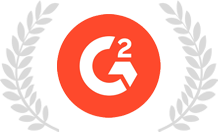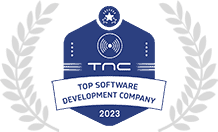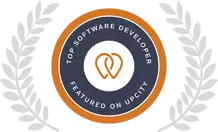Choosing the right tools and frameworks for Android development can greatly influence your app’s quality and success. Android developers have a wide range of options to choose from, including Integrated Development Environments (IDEs), libraries, frameworks, and testing tools. Whether you’re building a simple utility app or a complex, enterprise-grade application, selecting the right tools is critical.
1. Android Studio: The Official IDE
Android Studio is the official Integrated Development Environment (IDE) for Android app development, developed by Google. Since its launch, it has become the go-to tool for developers because of its robust features and seamless integration with the Android ecosystem.
- Powerful Code Editor: Android Studio’s intelligent code editor supports advanced code completion, refactoring, and real-time code analysis, allowing developers to write clean and efficient code faster.
- Built-in Emulator: The built-in Android Emulator lets developers test their apps on a wide variety of virtual devices, helping simulate different screen sizes, configurations, and Android versions.
- Gradle Build System: Android Studio utilizes the Gradle build system, which helps in managing dependencies, automating builds, and ensuring version compatibility.
- Android Debug Bridge (ADB): The ADB tool allows developers to communicate with devices for debugging purposes, making it easier to identify and fix issues during development.
- Support for Kotlin and Java: Android Studio supports both Kotlin and Java, allowing developers to choose the programming language they’re most comfortable with.
2. Kotlin: The Modern Programming Language for Android
Kotlin is now the preferred language for Android app development. Officially supported by Google, Kotlin offers several advantages over Java, making it the language of choice for many Android developers.
- Concise Syntax: Kotlin’s syntax is more concise than Java’s, reducing the amount of boilerplate code and making the development process faster and less error-prone.
- Interoperability with Java: Kotlin is 100% interoperable with Java, which means you can use Kotlin alongside Java in your projects. This makes it easier for developers to gradually transition from Java to Kotlin.
- Null Safety: Kotlin introduces null safety features, reducing the chances of encountering NullPointerExceptions, a common issue in Java development.
- Coroutines for Asynchronous Programming: Kotlin’s coroutines allow for more efficient handling of asynchronous tasks, improving the app’s performance by making background tasks easier to manage.
3. Flutter: Cross-Platform Framework for Android and iOS
Flutter is a popular open-source framework developed by Google that allows developers to build cross-platform apps using a single codebase. While not exclusive to Android, it’s an excellent choice for developers looking to create high-performance apps for both Android and iOS simultaneously.
- Single Codebase for Multiple Platforms: With Flutter, developers can write one codebase that works on Android, iOS, and even web and desktop platforms.
- Hot Reload: Flutter’s hot reload feature allows developers to see code changes in real-time without restarting the app, speeding up the development process.
- Widgets: Flutter provides a rich library of customizable widgets, making it easy to create beautiful and responsive user interfaces.
- Dart Programming Language: Flutter uses the Dart programming language, which is easy to learn and offers excellent performance, especially for mobile applications.
4. React Native: JavaScript Framework for Android Apps
React Native is a popular JavaScript framework used for building native Android and iOS apps. Developed by Facebook, it allows developers to write mobile apps using JavaScript and React, making it a popular choice for web developers transitioning to mobile development.
- Reusable Components: React Native allows developers to reuse components across different platforms, speeding up the development process.
- Third-Party Libraries: The framework has a large ecosystem of third-party libraries and tools that make it easier to integrate various functionalities into your app.
- JavaScript and React: React Native uses JavaScript, one of the most widely used programming languages, and React, a popular library for building user interfaces, making it accessible to a broad range of developers.
- Live Reload: Like Flutter, React Native offers live reload, allowing developers to instantly see the effects of their changes.
5. Jetpack Compose: Modern Toolkit for Building Android UI
Jetpack Compose is a modern UI toolkit introduced by Google for building native Android user interfaces. Unlike traditional UI frameworks, Jetpack Compose allows developers to build UIs declaratively, simplifying the process of creating complex layouts.
- Declarative UI: Instead of modifying views directly, Jetpack Compose lets you describe the UI in a declarative manner, making it easier to read and maintain.
- Faster Development: Jetpack Compose’s concise API reduces the amount of code needed for UI development, speeding up the development process.
- Interoperability with XML: Although Jetpack Compose encourages a new way of building UIs, it’s fully interoperable with the existing XML-based UI framework, allowing developers to mix and match both approaches.
- Part of Jetpack: Jetpack Compose is part of the larger Jetpack library, which includes tools and components for managing app lifecycle, navigation, data storage, and more.
6. Firebase: Backend as a Service (BaaS) for Android Apps
Firebase is Google’s Backend as a Service (BaaS) platform, offering a variety of services that help developers build and scale their Android apps more easily. Firebase handles much of the backend work, so developers can focus on the frontend and business logic.
- Realtime Database: Firebase Realtime Database allows developers to store and sync data between users in real-time, making it ideal for apps with chat or collaboration features.
- Authentication: Firebase Authentication simplifies the process of managing user sign-ups and logins by offering support for email, phone numbers, and social providers like Google and Facebook.
- Cloud Messaging: Firebase Cloud Messaging (FCM) enables developers to send push notifications and messages to users across different platforms.
- Analytics: Firebase Analytics provides deep insights into user behavior, allowing developers to make data-driven decisions to improve their app.
7. Gradle: Build Automation Tool for Android Development
Gradle is the official build automation tool for Android projects. It helps manage dependencies, automate builds, and ensure that your project is compiled and packaged correctly for distribution.
- Dependency Management: Gradle allows you to easily manage libraries and frameworks that your project depends on, ensuring they are included during the build process.
- Multi-module Support: Gradle supports multi-module projects, enabling developers to break down large applications into smaller, manageable components.
- Customizable Build Process: Gradle’s build system is highly customizable, giving developers control over how their app is built, tested, and deployed.
8. Retrofit: REST Client for Android
Retrofit is a type-safe HTTP client for Android and Java, widely used for making network requests and handling API calls. Developed by Square, Retrofit simplifies the process of interacting with RESTful APIs, allowing developers to easily fetch and send data.
- Easy API Integration: Retrofit provides an easy-to-use interface for working with APIs, making it simple to send HTTP requests and parse the responses.
- Automatic JSON Parsing: Retrofit integrates with libraries like Gson or Moshi to automatically convert JSON data into Java or Kotlin objects.
- Error Handling: Retrofit provides built-in support for handling network errors, making it easier to manage issues like timeouts or connectivity problems.
9. Android Architecture Components: Best Practices for Robust Apps
Android Architecture Components are a collection of libraries designed to help developers build robust, maintainable apps that follow best practices. These components include tools for managing data persistence, lifecycle management, and UI navigation.
- ViewModel: The ViewModel component helps manage UI-related data in a lifecycle-conscious way, ensuring that data survives configuration changes like screen rotations.
- LiveData: LiveData is an observable data holder that ensures UI components are updated when the data changes, reducing the need for manual updates.
- Room: Room is a persistence library that provides an abstraction layer over SQLite, making it easier to work with databases in Android.
- Navigation: The Navigation component simplifies in-app navigation by managing fragment transactions and ensuring a consistent user experience.
10. Android Testing Frameworks: Ensuring App Quality
Testing is a crucial part of Android app development, and there are several testing frameworks available to ensure your app performs as expected. Some of the most commonly used testing tools include:
- JUnit: A popular testing framework for unit testing in Java and Kotlin, allowing you to write and execute test cases for individual units of code.
- Espresso: A UI testing framework that automates interactions with your app’s user interface, ensuring that it behaves correctly across different devices and configurations.
- Robolectric: Robolectric provides unit test support for Android components, allowing you to run tests without needing a real device or emulator.
- Mockito: A mocking framework that enables developers to create mock objects for testing purposes, making it easier to isolate individual components during testing.
20 FAQs About Android App Development Tools and Frameworks
- What is the best tool for Android app development?
- Android Studio is the official IDE, offering a complete set of tools for Android app development.
- Why should I use Kotlin for Android development?
- Kotlin is concise, safe, and fully interoperable with Java, making it the preferred language for Android development.
- What is the advantage of using Flutter for Android development?
- Flutter allows for cross-platform development, enabling you to build Android and iOS apps with a single codebase.
- How does Jetpack Compose simplify Android UI development?
- Jetpack Compose offers a declarative UI approach, reducing the complexity of UI development and maintenance.
- What is Firebase used for in Android development?
- Firebase provides backend services such as databases, authentication, and cloud messaging, making it easier to build scalable apps.
- Is Gradle necessary for Android development?
- Yes, Gradle is essential for managing dependencies, automating builds, and packaging your app for distribution.
- What is the role of Retrofit in Android apps?
- Retrofit simplifies network operations by handling API calls and data parsing in Android apps.
- What are Android Architecture Components?
- These are a set of libraries that help developers follow best practices for building robust and maintainable apps.
- Which testing frameworks should I use for Android development?
- JUnit, Espresso, and Robolectric are commonly used frameworks for unit and UI testing in Android apps.
- How can Firebase Analytics improve my Android app?
- Firebase Analytics provides insights into user behavior, helping developers make data-driven decisions to enhance user engagement.
- Can I use Kotlin and Java together in an Android project?
- Yes, Kotlin is fully interoperable with Java, allowing developers to use both languages in the same project.
- Is Flutter suitable for large-scale Android apps?
- Yes, Flutter is used by companies like Google and Alibaba for large-scale applications due to its efficiency and flexibility.
- How does Android Studio support app testing?
- Android Studio integrates testing tools like Espresso and JUnit, making it easier to write and execute tests.
- What is the difference between Room and SQLite?
- Room is an abstraction layer over SQLite, simplifying database interactions and reducing boilerplate code.
- How can Jetpack Compose improve app performance?
- Jetpack Compose reduces the complexity of UI updates, leading to better performance by minimizing unnecessary re-renders.
- Why is Firebase Cloud Messaging important for Android apps?
- Firebase Cloud Messaging enables developers to send notifications and messages to users in real-time.
- What is the difference between Flutter and React Native?
- Flutter uses Dart and offers a more native experience, while React Native uses JavaScript and React for cross-platform development.
- How does Android Studio’s emulator help in app development?
- The Android emulator allows developers to test their apps on various virtual devices, simulating different screen sizes and Android versions.
- What is Android Debug Bridge (ADB)?
- ADB is a command-line tool that allows developers to communicate with an Android device for debugging purposes.
- How does LiveData improve data handling in Android apps?
- LiveData ensures that UI components are updated automatically when the underlying data changes, reducing the need for manual updates.
By utilizing the best tools and frameworks for Android app development, developers can create high-quality, scalable, and performance-driven apps that meet users’ needs. Whether you’re a beginner or an experienced developer, choosing the right tools is essential for success in the competitive Android app market.
- How to Join Two Strings in Flutter - January 2, 2025
- How to Add Icon in Flutter - January 2, 2025
- How to do Facebook Login in Flutter - January 2, 2025




















